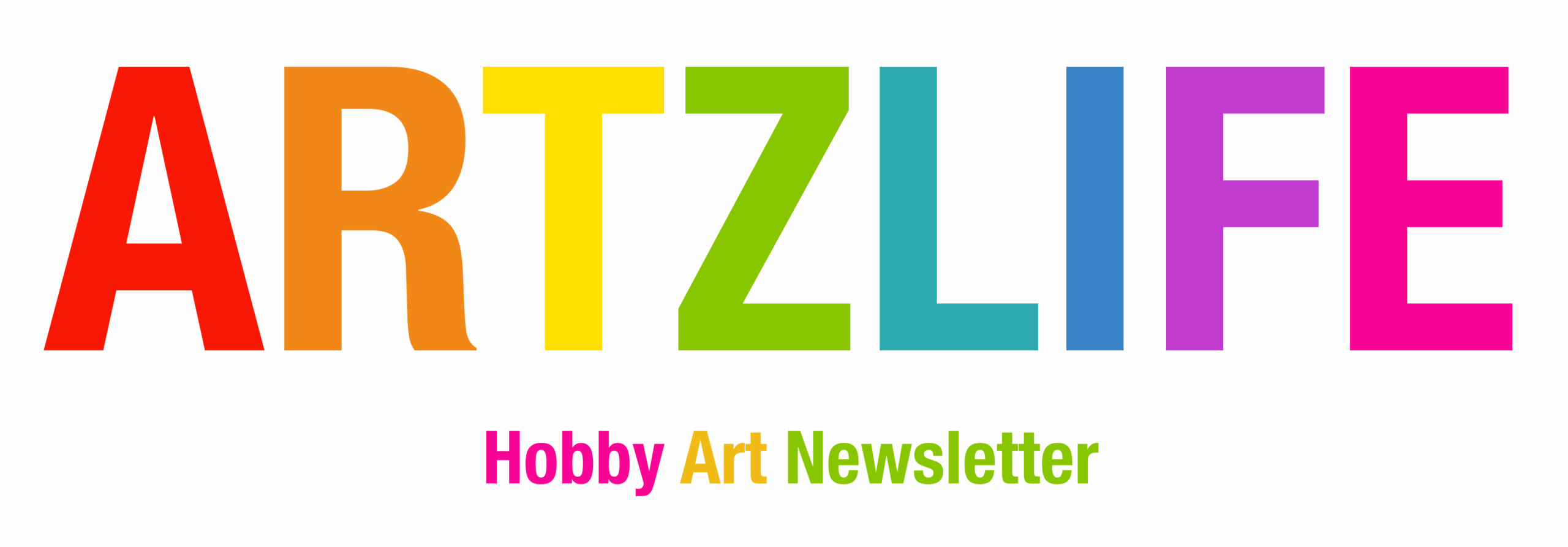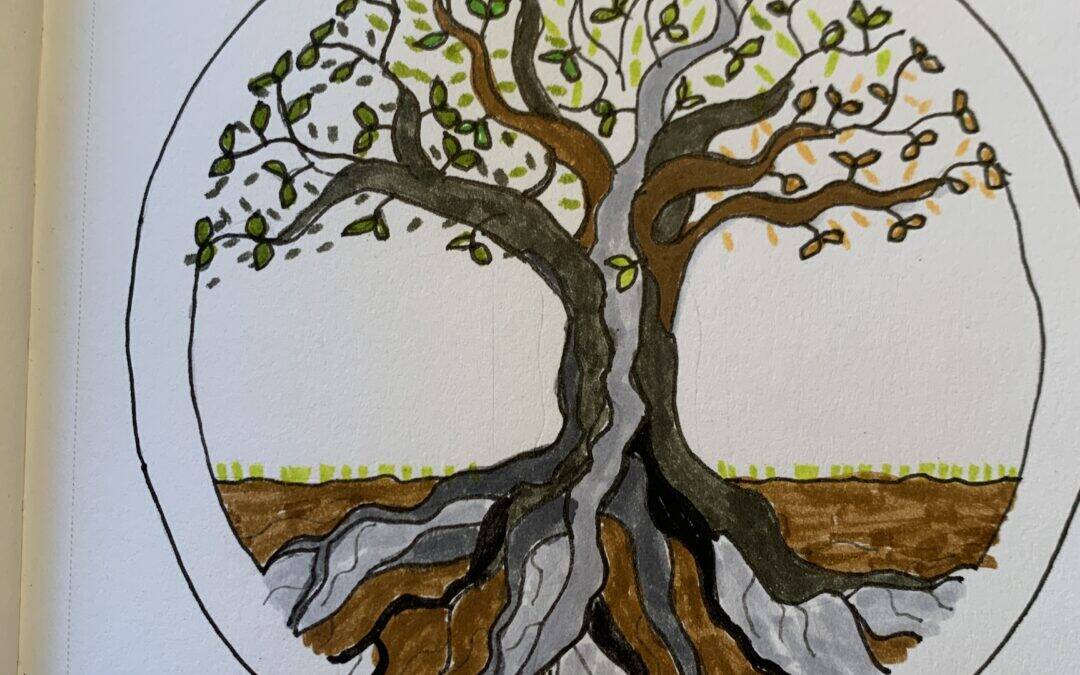Author: Alison Hazel – Updated: October 2025
As a Hobby Artist
What I Draw
As a hobby artist, I keep coming back to the same subjects, almost as if they are part of my inner landscape. Over time, I’ve realized that I’m not especially drawn to drawing people, faces, or animals and I’m completely fine with that. My heart belongs to nature.
Symbolism
I love sketching seascapes, beaches, and the quiet beauty of trees, leaves, seashells, seedpods, and cones. Trees especially speak to me. They hold a deep symbolism of life, strength, and renewal.
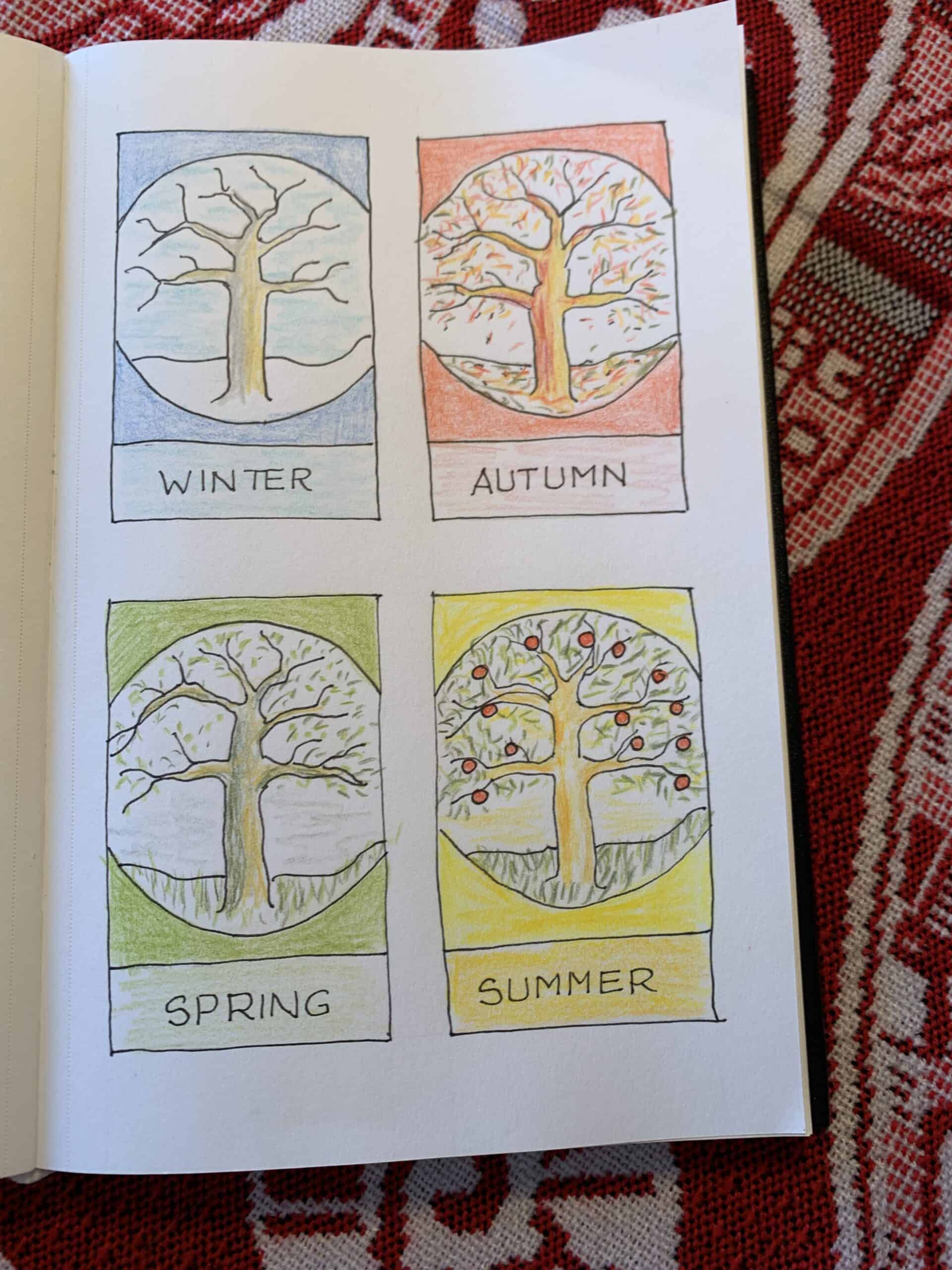
Creative Forest
More trees
Creativity has its own seasons and rhythms of growth, rest, and renewal. Lately, I’ve been filling my sketchbook with trees and these are Tree of Life studies, seasonal trees, and some experimental designs in my grid art sketchbook. In a way each drawing feels like I’m planting a seed, something that might grow into a bigger idea later.
Revisit
This means it is about more than just drawing. It’s about what happens when we revisit a subject over and over, letting it teach us about ourselves. My sketchbook feels like its own small patch of earth where I can nurture new ideas and watch them grow.
Reflect and Renew
Planting
What are you planting in your life right now? What dreams are you tending quietly, waiting for them to bloom? Whether you draw, write, knit, or garden, every small act of creativity can be a way to grow your own little forest—one tree, one leaf, one moment at a time.
My Sketchbook
Trees and More Trees
This season, my focus is on trees. I began with the Tree of Life, a powerful symbol of growth and connection, and then created a set of four seasonal trees arranged neatly in a grid.
Seasonal
Each tree has its own personality. Spring is full of promise, summer is lush and abundant, autumn glows with warm fiery colors, and winter stands quiet and bare, resting until it’s time to grow again.
Cycles
This series reminds me that the cycles of nature are also our cycles. Sometimes we are in bloom, sometimes we are letting go, and sometimes we are simply resting and gathering strength for the next season.
The Tree of Life
Cross Cultural
The Tree of Life is one of those timeless symbols that appears across cultures, always slightly different yet always carrying a message of connection. Its roots reach deep into the earth, while its branches stretch toward the sky, reminding me to stay grounded while reaching for growth and light.
Interconnectedness
It also speaks of interconnectedness—every root, branch, and leaf is part of the whole. When I draw this motif, I try to weave that feeling of connection into my work through flowing lines and organic shapes.
Renewal
Another beautiful lesson from the Tree of Life is renewal. Trees shed leaves, rest, and bloom again. This cycle of life, death, and rebirth encourages me to embrace my own creative seasons with more patience and trust.
Creative Journey
For me, the Tree of Life isn’t just a design I like to draw, but rather it’s a living metaphor. It reminds me that my creative journey is about wholeness, balance, and growth.
Tree of Life in Art
Centuries
Artists throughout history have used the Tree of Life to express big ideas and the connection between realms, fertility, transformation, and spiritual ascent. From Norse Yggdrasil and Assyrian sacred trees to Byzantine mosaics, Islamic tiles and Buddhist Bodhi trees, this symbol has been reimagined again and again.
Modern Artists
Even today, artists and makers continue to explore its meaning through paintings, jewelry, tattoos, and digital art. In a way, I love knowing that my sketches are part of this long tradition of using trees to tell the story of life.
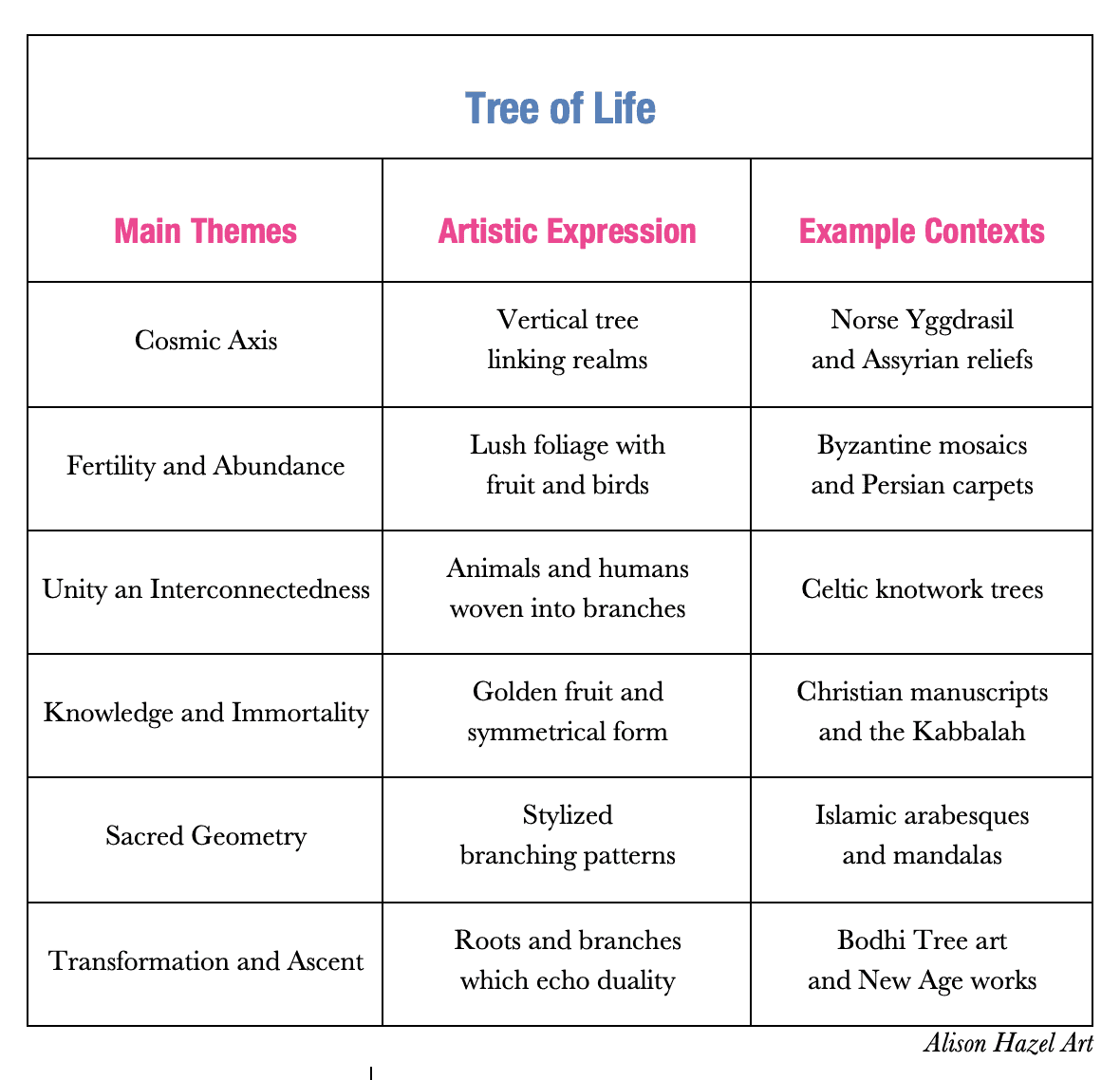
Famous Artwork Examples
Inspiration
Let’s look at some specific, famous artworks (examples as inspiration) which are from different cultures and eras. I’m not an art critic or historian, I am but a lowly hobby artist, however, I’ll share a little of how I see how they express the Tree of Life symbolism in each piece.
Gustav Klimt “The Tree of Life” (1905–1909)
Spirals
This piece is a part of the 3-part Stoclet Frieze mural. Klimt painted some swirling golden branches which form a labyrinth of spirals, mainly up facing, that seem to evoke eternity and interconnectedness.
Cycles
The lavish gold leaf recalls the Byzantine mosaics, while the spirals suggest infinite cycles. Additionally, Klimt’s figures merge with the tree, to emphasize the unity of human and cosmic life.
Medieval Christian Manuscripts: The Tree of Life in Eden
Garden of Eden
Examples: The Winchester Psalter (c. 1150), The Bible of St. Louis (c. 1226–1234). This classic Tree of Life is depicted as a radiant, central tree in the Garden of Eden. Sometimes Christ is shown as the fruit or as the tree itself. This theme links the ideas of crucifixion to the promise of eternal life.
Symmetry
These ancient manuscripts use symmetry and bright colors to suggest perfection and paradise. These trees function as both a literal and symbolic image almost as a promise of resurrection and restoration.
The Assyrian Sacred Tree (c. 9th–7th century BCE)
Stylized
Example: Stone reliefs from the palaces of Ashurnasirpal II and later kings. This stylized “tree” (sometimes more a palmette) stands between two winged genies. It represents fertility, divine order and the king’s link to a higher cosmic authority.
Sacred Geometry
The symmetrical and geometric of the Assyrian Sacred Tree form signals sacred geometry. The winged figures tend the tree and show its role as a source of divine blessing and
Kabbalistic Tree of Life: Sefirot Diagrams
Mystical Texts
Examples: These are created as manuscript diagrams or as printed mystical texts. The Tree of Life here is entirely abstract with ten spheres (sefirot) connected by 22 paths to map the divine emanation and journey from the infinite to the material world.
Sefirot
The Sefirot (sometimes spelled sephiroth) are the ten attributes or emanations through which the Ein Sof (the infinite divine) reveals itself and continuously creates both the spiritual and physical realms, according to Kabbalah (Jewish mysticism). Each Sefirah represents a different aspect of the divine and is often visualized as part of the Kabbalistic Tree of Life, which shows how they connect and interact.
Here’s a simple breakdown of the ten Sefirot:
- Keter (Crown): Pure divine will and unity
- Chokhmah (Wisdom): Creative inspiration, the spark of an idea
- Binah (Understanding): Processing and shaping ideas
- Chesed (Kindness): Lovingkindness, generosity, expansion
- Gevurah (Strength): Discipline, boundaries, judgment
- Tiferet (Beauty): Harmony, balance, compassion
- Netzach (Endurance): Perseverance, victory, determination
- Hod (Splendor): Humility, gratitude, acknowledgment
- Yesod (Foundation): Connection, channeling, grounding energy
- Malkhut (Kingdom): Manifestation, bringing the spiritual into the physical world
Together, the Sefirot are a map of both the cosmos and the inner human experience, showing how we can align ourselves with divine flow.
Diagram
Usually, artists will draw these diagrams as lattices, often inscribed in circles or triangles, showing a metaphysical “tree” not of wood but of divine energy. This layout seems to have influenced later esoteric art.
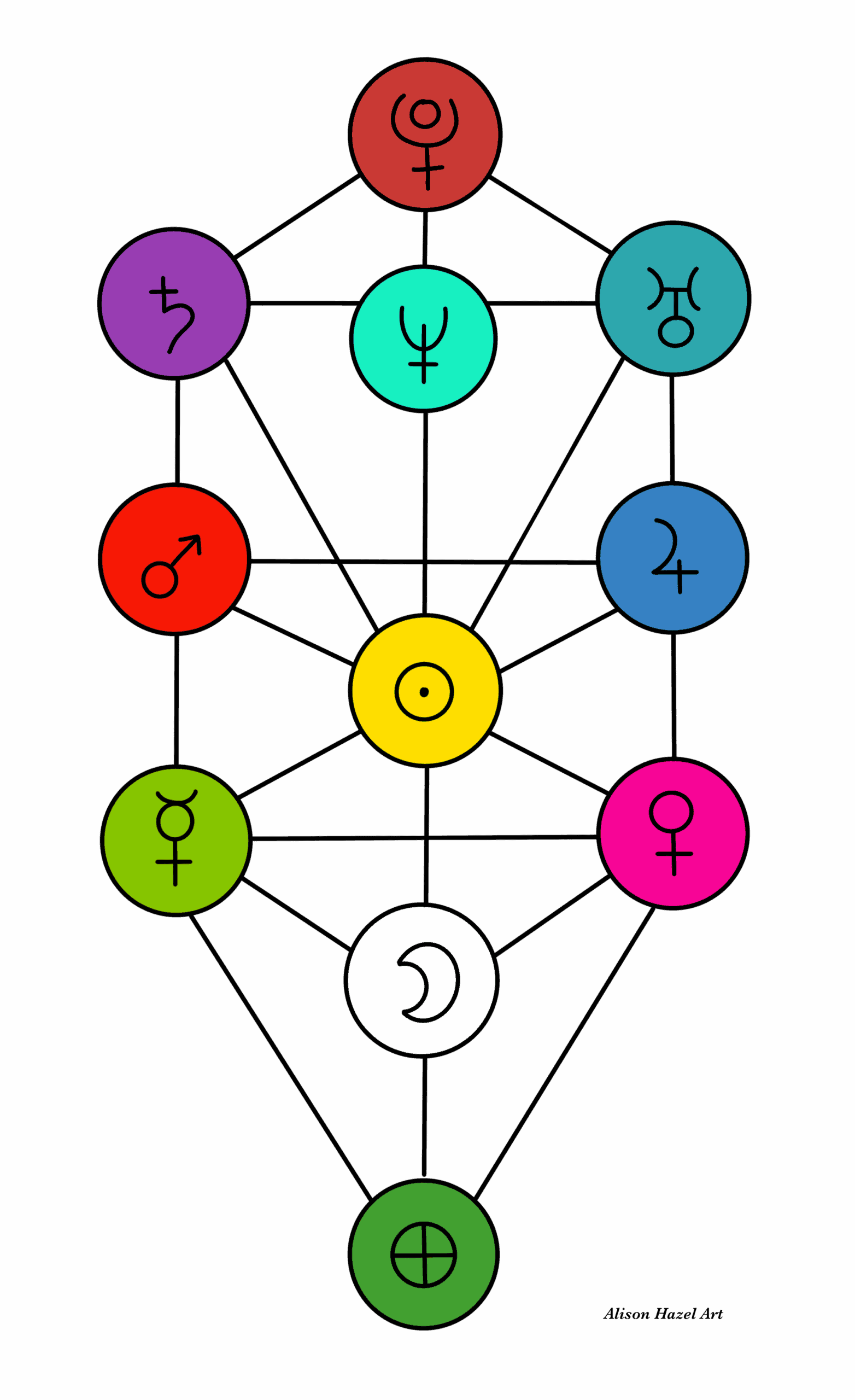
Islamic Art: The Tree of Life Motif in Carpets and Tiles
Rugs and Tapestries
Example: Persian “Tree of Life” prayer rugs, Ottoman ceramics and Mughal architecture. A central trunk with symmetrically branching stems rising toward a stylized heaven.
No People
By not having any people of figural depictions in this art, Islamic artisans frequently use abstracted plant forms in their designs. These trees often signify eternal paradise, divine order and the meaningful connection between earthly prayer (human) to heavenly reward (God).
Buddhist Art: The Bodhi Tree
Reliefs
Examples: Sanchi Stupa railings (India, c. 1st century BCE) and Bodh Gaya reliefs.
Enlightenment
The Bodhi Tree is the tree where under which the Buddha achieved his enlightenment. It is shown as a world tree which connects our human potential to cosmic truth.
Absence of Presence
The Bodhi Tree is often drawn with a vacant throne or an empty seat beneath it. This feature artistically represents the Buddha’s presence through his absence. By contrast, the tree itself stands for spiritual awakening and continuity.
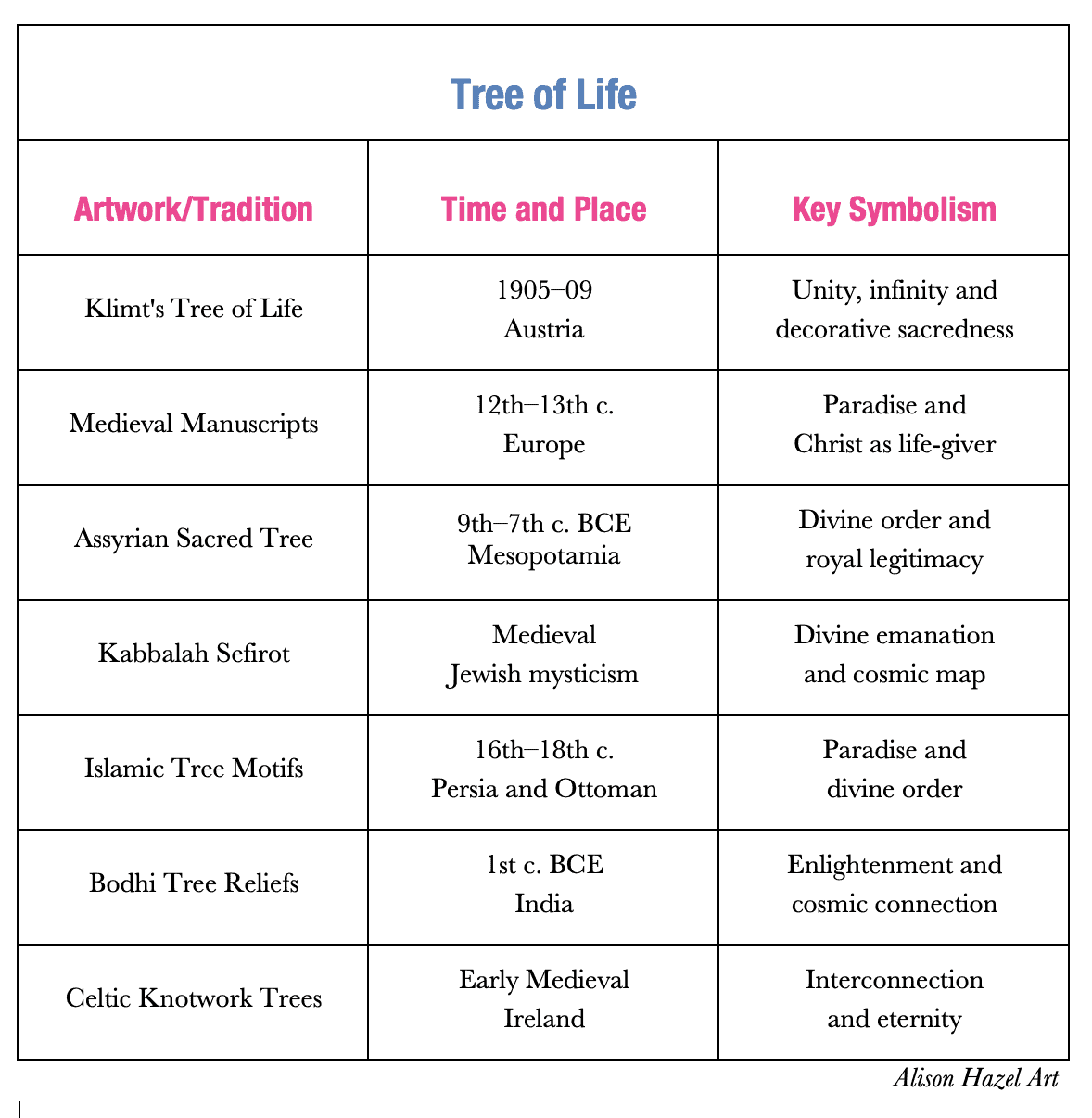
Celtic Art: Knotwork Trees
Illuminated Manuscripts
This type of Tree is shown as high crosses and is found typically in Ireland. Example: They are classically shown in lavishly illuminated manuscripts like the Book of Kells.
Cycle of Life
The intertwined roots and branches suggest the endless cycles of death, life, rebirth and interconnection.
Spirit in Nature
By merging animals interlaced with arboreal motifs, it is as though Celtic artists emphasized a living continuum of nature and spirit.
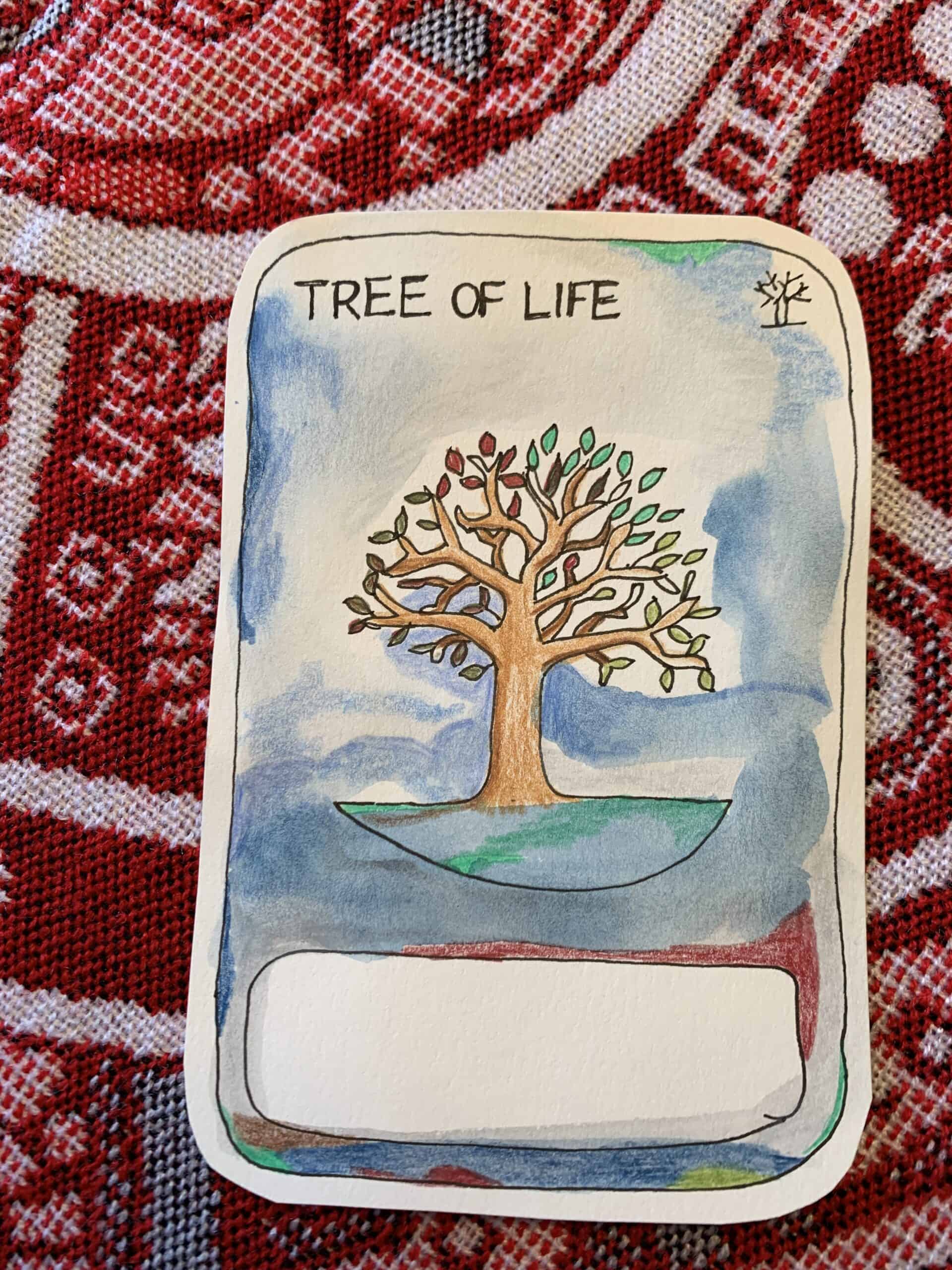
How to Draw the Tree of Life Symbol
Let’s Create
You don’t need to be a professional artist to enjoy drawing the Tree of Life. This activity is more about expression than perfection. Go and find your sketchbook, a pen, or your favorite paints, and let’s create a Tree of Life together.
Sketchbook
You can do it in your grid sketchbook or as a one-page artwork of do both as I did. It’s up to you.
Step 1: Draw the Circle
The Tree of Life is often shown inside a circle. This symbolizes wholeness and unity. Also, the circle gives you a frame in which to work. With a compass, lightly sketch a circle to frame your design. This will represent the boundaries of your universe for your tree.
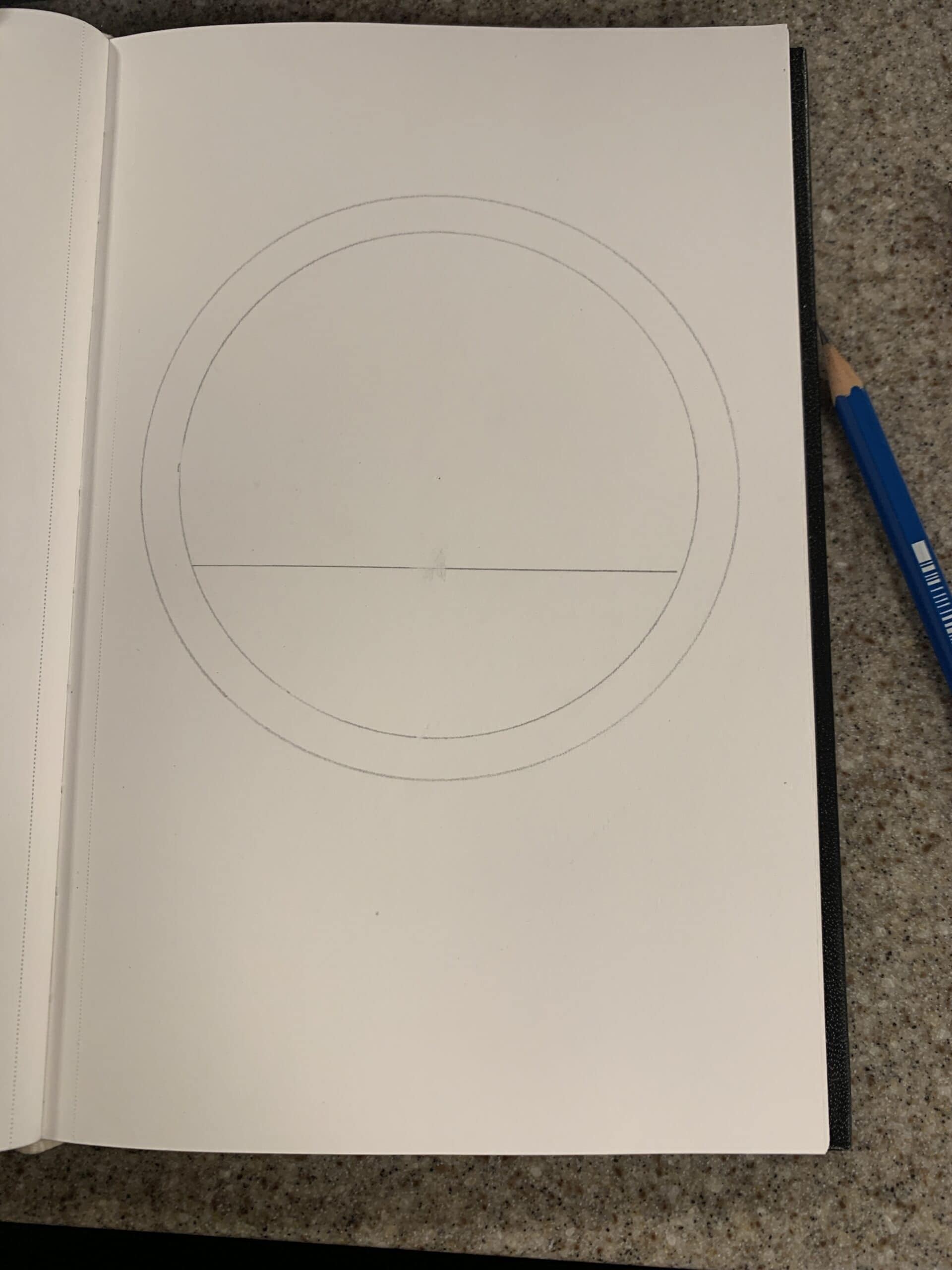
Step 2: Add the Trunk
About one fifth of the way up from the bottom of the circle draw in the horizon lightly with a pencil. I use a 2H pencil for this part. In the center of the circle, draw a sturdy trunk. It doesn’t need to be perfectly straight and in fact, a little curve, wobble or wiggles will add personality and knarlyness to your tree. Think of this part as the spine that holds everything together from which the rest hangs.
Step 3: Create the Roots
From the base of the trunk, draw some tangled roots which spread outward and downward. Let them twist and branch like rivers underground and make them thinner at the tips. Try not to pass outside the circle although you can for the odd root if you like if that’s the type of art you are making. The roots represent grounding, ancestry and where you come from.
Step 4: Branch Out
At the top of the trunk, let the branches reach up and out, filling the upper circle. Just like the roots, the branches can twist and flow. The branches should get thinner and more split towards the edges near the circle. These branches symbolize growth, dreams and expansion into the future.
Step 5: Balance Roots and Branches
Many traditional Tree of Life designs mirror the roots and branches, showing balance between the seen and unseen, the inner and outer. Personally, I prefer to have more leaves on top than roots below, but it is up to you. You can reflect this symmetry if you like or do what I do and make your balance of branches and roots more free flowing. It’s a good idea here to just follow your intuition.
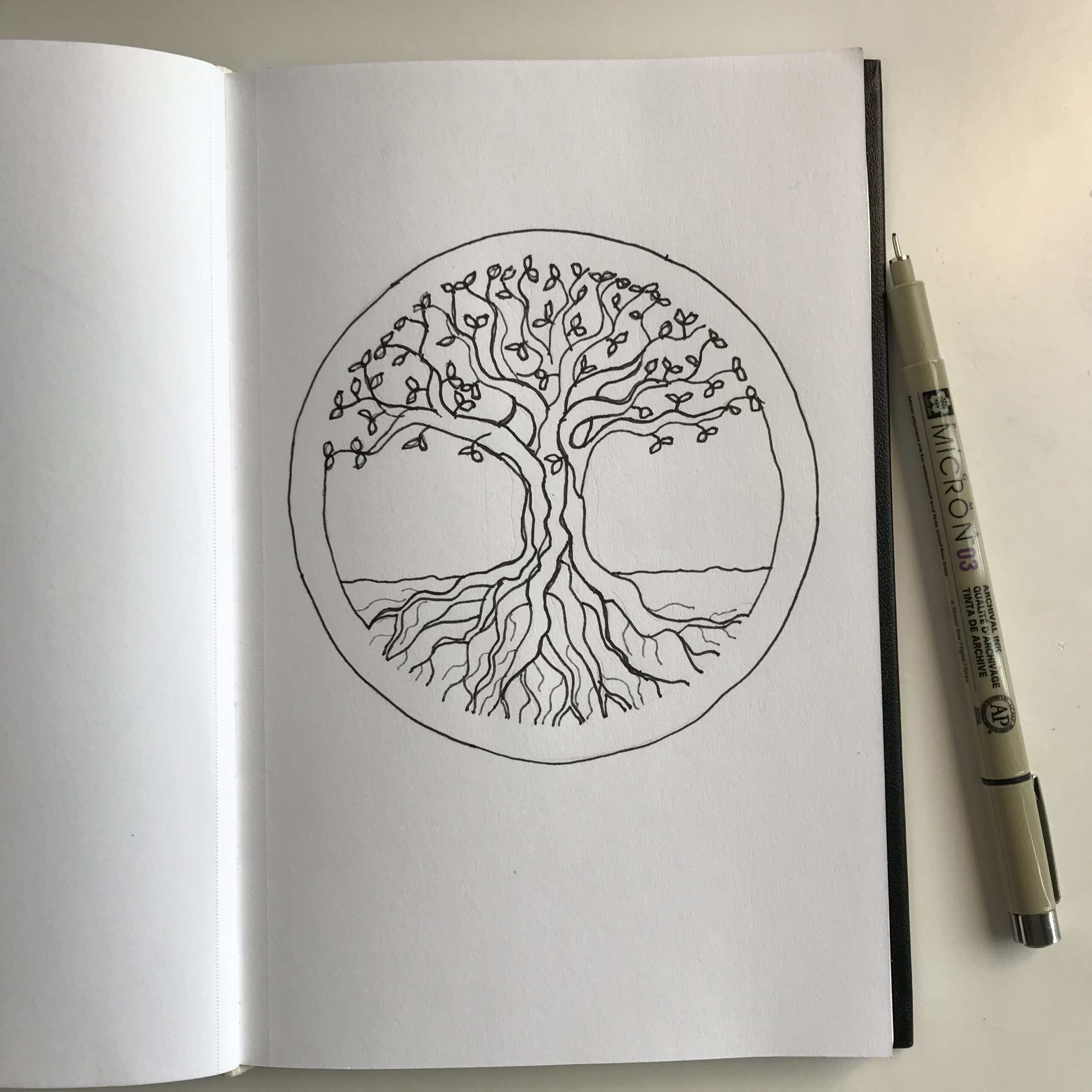
Step 6: Add Leaves, Fruit or Spirals
Now for the fun details and embellishments. Leaves bring life and renewal and you can add leaves individually to the tips of every twig and in some case add two leaves. Fruit like apples suggest abundance. Fruit should really nestle below a branch or twig and not be just plonked in midair. Spirals in the branches and twigs hint at spiritual energy. Here you can play with patterns and textures to make your tree unique.
Step 7: Ink and Color
Once you are happy with your sketch, go over the lines with a black pen. I used a Pigma Micron 0.3mm black nib. You can add depth by having some branches in front of others or keep it flat. Now, add some color if you like. I used my Faber Castell Polychromas colored pencils to color my tree. Earthy browns and greens feel natural, but you can also explore rainbow hues, golds, or even abstract palettes to match your own energy.
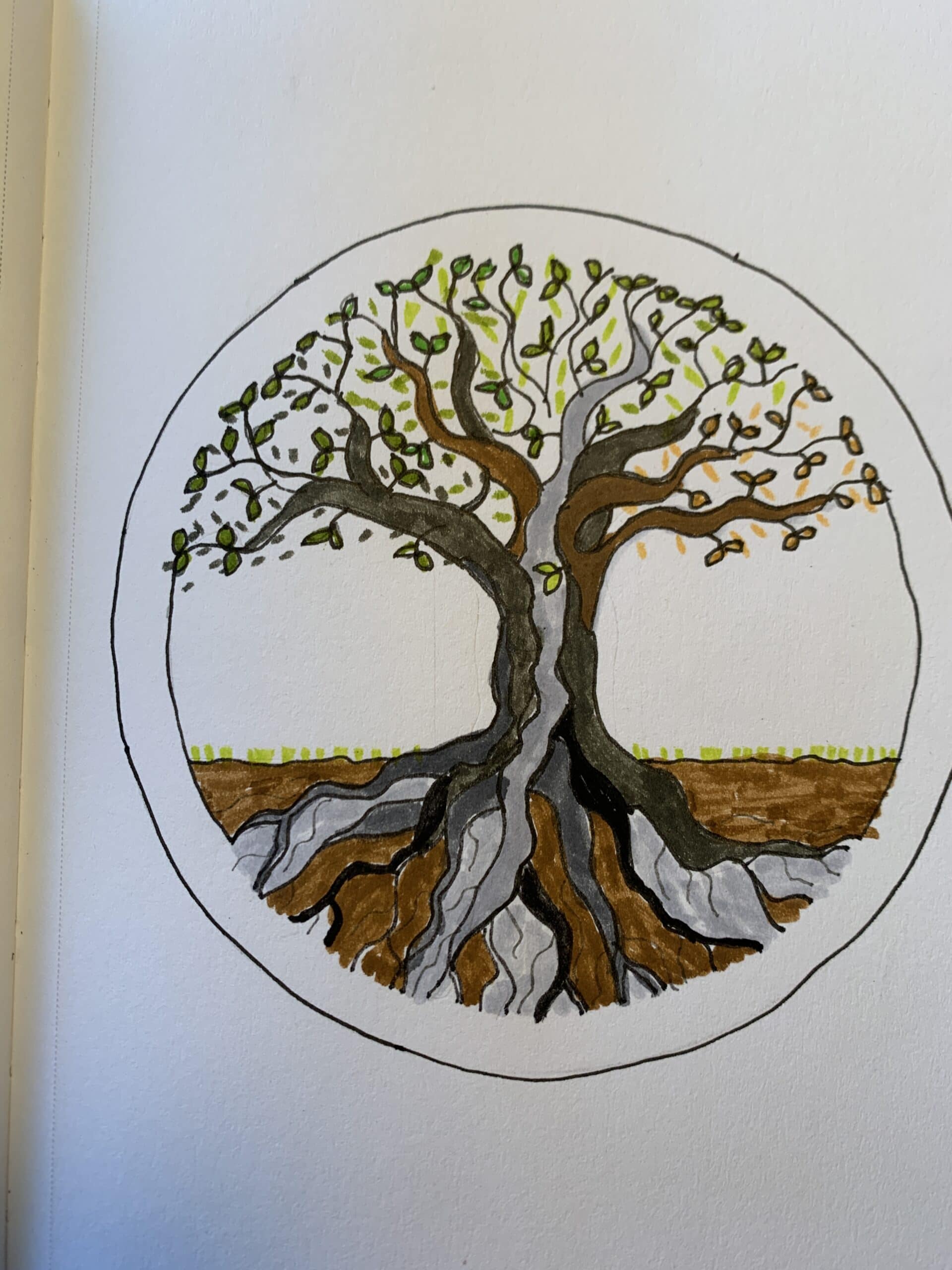
Step 8: Make It Yours
Remember that this is your Tree of Life. You can add symbols, words, or little hidden details like woodland animals or lady bugs that are meaningful to you. If you are mindful as you draw, you’ll find that every mark on the page can hold intention.
Overarch
No Rush
Exploring the Tree of Life through art has been a reminder to me that for me, creativity is never rushed. It tends to grow slowly, season by season, just like a tree. Sometimes, every sketch in my sketchbook feels like I’m planting a seed of inspiration that may take time to bloom, or not, but that’s part of the beauty. I believe that these small creative hobby art moments build a forest of ideas that can nurture you for years to come.
Tree of Life Card
If you’d like an extra spark of inspiration, you might enjoy pulling the Tree of Life card from my Artspiration Card Deck. It’s one of my favorite cards because it reminds me to stay rooted, keep growing and honor every stage of the creative cycle.
Your Plantings
My hope is that this encourages you to keep sowing your own seeds and that means on the page, in your mind and in your life. I’d love you to trust the quiet process of your artistic growth.

Author Bio: Alison Hazel
Alison Hazel is a hobby artist and she shares her ongoing journey about becoming an artist later in life. She creates simple art that anyone can make. She hopes to inspire you to reach your creative potential in the area that suits you. Read more about Alison’s story. Get her newsletter.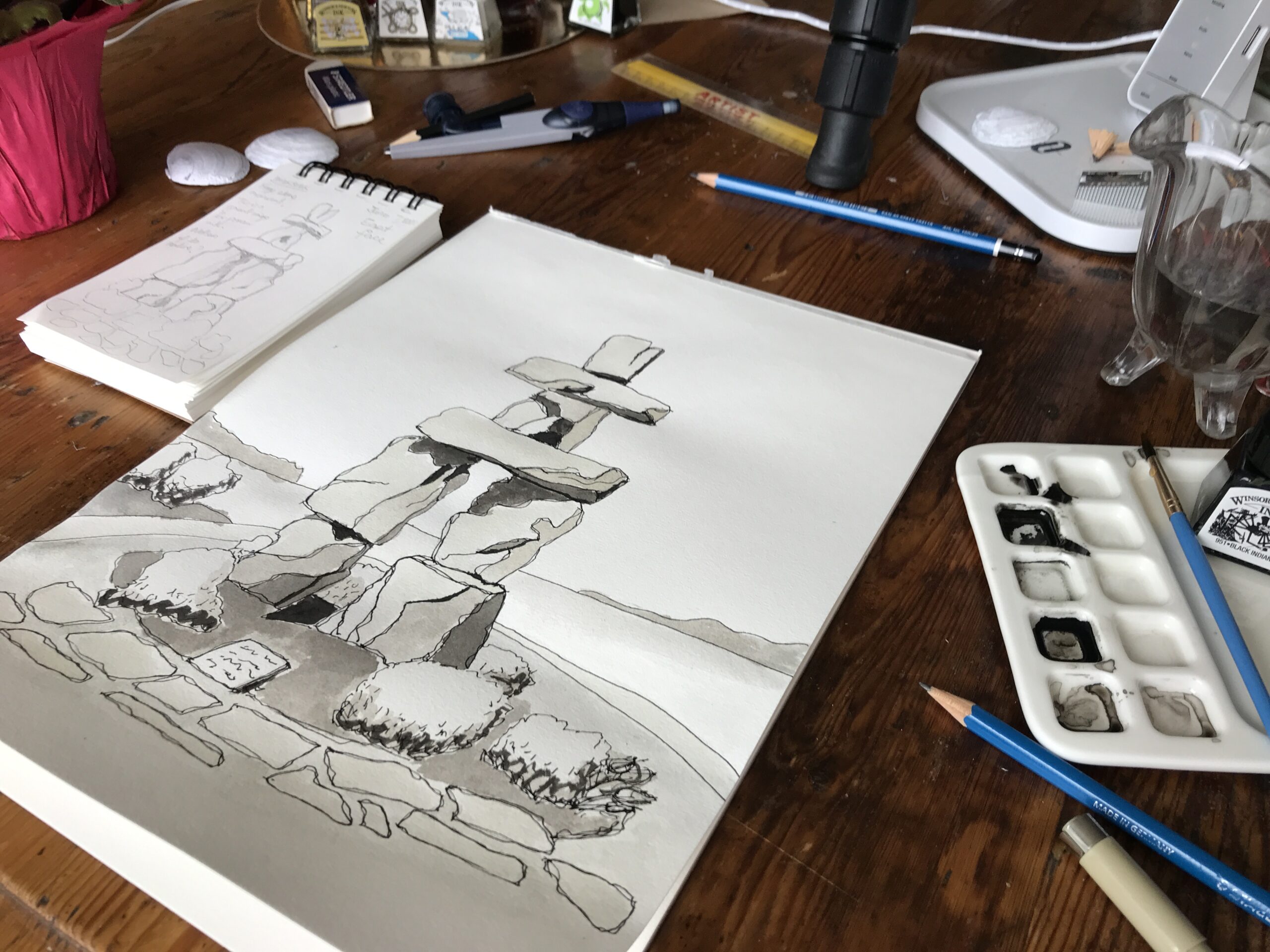
Inukshuk – Pen and Ink
How to draw the Vancouver Inukshuk with black and grey scale drawing inks. Nature Journal. Hobby Artist
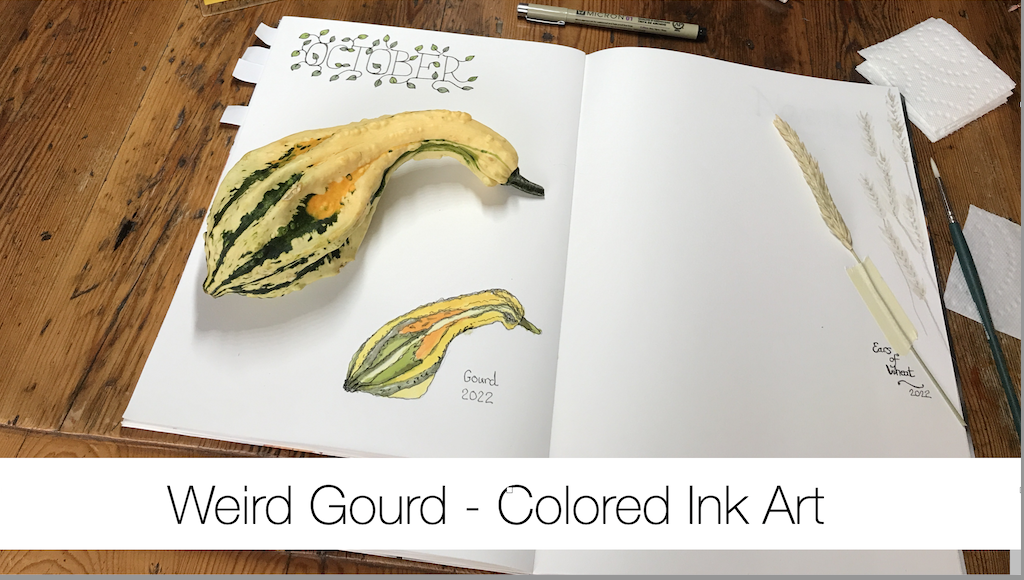
Weird Gourds – Colored Ink Art
Join me as I sketch, draw and paint a weird autumn themed knobby gourd using colored ink as a hobby artist.

Artzlife Newsletter
Author: Alison Hazel - Published: December 2024 Artzlife Newsletter Creative art journal inspiration for hobby artists Welcome to a Place for Passionate Hobby Artists Are you a hobby artist seeking inspiration, connection and gentle guidance on your creative...

